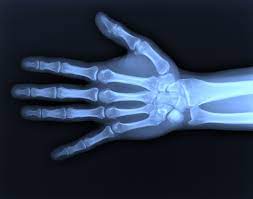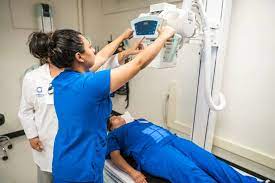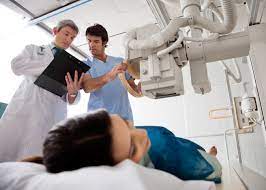
The Essential Role of X-Ray Techs in Modern Healthcare
The Role of X-Ray Technicians in Modern Healthcare
X-ray technicians, also known as radiologic technologists, play a crucial role in the field of healthcare by performing diagnostic imaging examinations on patients. These professionals are highly skilled in operating x-ray equipment to produce images of various parts of the body, helping physicians diagnose and treat medical conditions.
One of the primary responsibilities of x-ray technicians is to ensure that patients are positioned correctly to obtain clear and accurate images. They must also follow strict safety protocols to minimize radiation exposure to patients, themselves, and others in the vicinity.
With advancements in technology, x-ray technicians now have access to digital imaging systems that provide high-quality images quickly and efficiently. This allows for faster diagnosis and treatment planning, ultimately improving patient outcomes.
Besides traditional x-rays, x-ray technicians may also be trained to perform other imaging procedures such as CT scans, MRIs, and fluoroscopies. Their versatility and expertise make them valuable members of the healthcare team.
Furthermore, x-ray technicians must possess strong communication skills as they interact with patients before, during, and after imaging procedures. They must explain the process clearly, address any concerns or questions patients may have, and ensure their comfort throughout the examination.
In conclusion, x-ray technicians play a vital role in modern healthcare by providing essential diagnostic imaging services that aid in diagnosing and treating various medical conditions. Their expertise, attention to detail, and commitment to patient care contribute significantly to the overall quality of healthcare delivery.
8 Essential Tips for X-Ray Technicians to Achieve Precision and Safety in Imaging
- Maintain proper positioning of the patient for accurate imaging.
- Follow safety protocols to protect yourself and patients from radiation exposure.
- Ensure equipment is properly calibrated and maintained for clear imaging results.
- Communicate clearly with patients to explain procedures and alleviate any concerns.
- Practice good hygiene by sanitizing equipment and washing hands regularly.
- Stay updated on latest technologies and techniques in the field of radiology.
- Collaborate effectively with other healthcare professionals to provide comprehensive patient care.
- Continuously seek opportunities for professional development and further education.
Maintain proper positioning of the patient for accurate imaging.
Ensuring the proper positioning of the patient is a critical tip for x-ray technicians to achieve accurate imaging results. By carefully positioning the patient in the correct alignment, x-ray technicians can capture clear and precise images of the targeted area, facilitating an accurate diagnosis by healthcare providers. Proper patient positioning not only enhances the quality of imaging but also minimizes the need for repeat scans, reducing radiation exposure and enhancing overall patient safety and comfort during the procedure.
Follow safety protocols to protect yourself and patients from radiation exposure.
It is paramount for x-ray technicians to adhere to stringent safety protocols to safeguard both themselves and their patients from radiation exposure. By following established guidelines and procedures, technicians can minimize the risks associated with radiation exposure and ensure the well-being of all individuals involved in the imaging process. Prioritizing safety not only protects the health of technicians but also upholds the highest standards of care for patients, underscoring the importance of maintaining a safe working environment in the field of radiologic technology.
Ensure equipment is properly calibrated and maintained for clear imaging results.
It is essential for x-ray technicians to ensure that the equipment they use is properly calibrated and maintained to achieve clear imaging results. Proper calibration of x-ray machines helps in producing accurate images, which are crucial for an accurate diagnosis by healthcare providers. Regular maintenance of equipment not only ensures its longevity but also guarantees consistent performance, ultimately benefiting both the patients and the healthcare team. By prioritizing equipment calibration and maintenance, x-ray technicians can uphold high standards of imaging quality and contribute to the overall efficiency and effectiveness of diagnostic procedures in healthcare settings.
Communicate clearly with patients to explain procedures and alleviate any concerns.
Clear communication with patients is a fundamental aspect of the role of an x-ray technician. By effectively explaining procedures and addressing any concerns that patients may have, x-ray technicians can help alleviate anxiety and ensure that patients feel comfortable and informed throughout the imaging process. This communication not only fosters trust between the technician and the patient but also plays a crucial role in providing high-quality care and enhancing the overall patient experience in healthcare settings.
Practice good hygiene by sanitizing equipment and washing hands regularly.
It is essential for X-ray technicians to practice good hygiene by regularly sanitizing equipment and washing their hands. By maintaining a clean working environment and following proper hygiene protocols, technicians can help prevent the spread of infections and ensure the safety of both themselves and their patients. Regular handwashing is a simple yet effective way to reduce the risk of contamination and maintain a high standard of cleanliness in medical settings. By prioritizing hygiene practices, X-ray technicians demonstrate their commitment to upholding professional standards and promoting a safe healthcare environment for all.
Stay updated on latest technologies and techniques in the field of radiology.
It is essential for X-ray technicians to stay updated on the latest technologies and techniques in the field of radiology. Advancements in imaging technology and diagnostic tools are constantly evolving, and keeping abreast of these developments is crucial to providing the highest quality of care to patients. By staying informed about new equipment, procedures, and best practices, X-ray technicians can enhance their skills, improve patient outcomes, and contribute to the overall advancement of healthcare services.
Collaborate effectively with other healthcare professionals to provide comprehensive patient care.
Collaboration is key for X-ray technicians in delivering comprehensive patient care. By working effectively with other healthcare professionals, such as radiologists, physicians, and nurses, X-ray techs can ensure that patients receive the best possible treatment and diagnosis. Through open communication and a team-oriented approach, X-ray technicians can contribute valuable insights from their imaging expertise to the overall care plan. This collaborative effort not only enhances patient outcomes but also fosters a supportive and cohesive healthcare environment where every team member’s input is valued.
Continuously seek opportunities for professional development and further education.
Continuously seeking opportunities for professional development and further education is essential for X-ray technicians to stay current with advancements in technology and best practices in the field of diagnostic imaging. By actively pursuing additional training, attending workshops, and staying informed about the latest trends, X-ray techs can enhance their skills, expand their knowledge base, and ultimately provide better care for patients. Embracing lifelong learning not only benefits the individual technician but also contributes to the overall improvement of healthcare services and outcomes.



